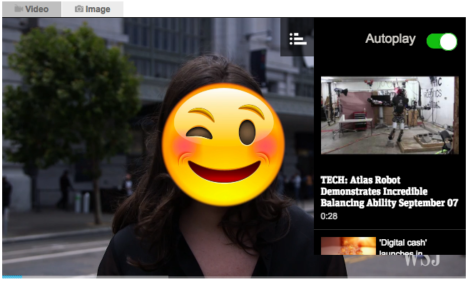Is online video a busted flush for publishers?
With Bauer admitting its digital video division has not been hitting its targets Mumbrella’s Alex Hayes asks whether online video is the golden goose publishers thought it would be.
There’s something deeply worrying about Bauer’s very candid admission that it’s online video content strategy hasn’t been working – something that should probably worry the entire media industry.
For the past few years publishers have been rushing to create video teams to churn out cheap, online fodder based on the supposition that audiences are hungry for that kind of thing and, more importantly, advertisers are, too.




Why jump straight in the “creation” pool – a far smarter building proposition would be to sample (i.e. license suitable content), building an audience around the outcomes of the sampling – and only then jump in the deep end with content creation activities.
Aint rocket science
Video isn’t the problem.
Print folk thinking they can easily produce engaging video is the issue.
That Helen McCabe disaster is a sensational case study of this.
absolutely right, @Yep. Hence why news this week that Bauer is axing their video manager, and moving video in under editorial (almost certainly dominated by print journos) is a really dumb idea.
as long as publishers focus their video monetisation strategy around pre-rolls, they will struggle. Firstly, they will never get enough scale (traffic wise) vs the likes of FB and Youtube to generate meaningful video revenues. Secondly pre-rolls are a rubbish user experience, and more about shoehorning a linear TV model into an on-demand digital context. Persisting with this will just continue to work against publishers trying to build audience scale around video
perhaps they should take a leaf from the The buzzfeed video monetisation model ie producing and distributing video content across any/all channels, and charging brands a motza (aka native/branded/custom content)
Hey Alex,
Interesting perspective. We will be talking about our Native Video strategy at Publish on Thursday. Native video is our fastest growing revenue stream in the media division and we are pretty bullish about Video in general. We don’t run pre-rolls at all and that’s never been our strategy. Our research shows that the audience hates them.
Looking forward to discussing it at Publish.
Neil Ackland
Often trying to watch a video on a publishers website is impossible. To watch a vid I have to wait for an ad to load. 20 seconds later I am already watching the vid on YouTube, because I clicked out of the publishers site, which would probably still be loading.
Publishers need to embrace the platforms that other users use. Think Unilad. Over time, Unilad might be something and earning $’s. Ride where the folk ride and try not to make them ride your bike, which they do not like, because the tyres are flat.
OR get your load speed sorted, however serve up an ad, which is nearly as long as the video itself. AND edit photos together to create a video collage (link below). Fairfax (Domain aside) are doomed.
http://www.smh.com.au/video/vi.....4kuc9.html